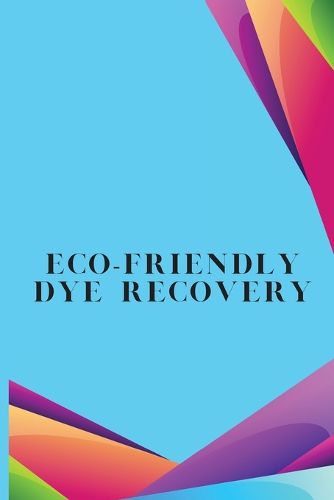Readings Newsletter
Become a Readings Member to make your shopping experience even easier.
Sign in or sign up for free!
You’re not far away from qualifying for FREE standard shipping within Australia
You’ve qualified for FREE standard shipping within Australia
The cart is loading…






This title is printed to order. This book may have been self-published. If so, we cannot guarantee the quality of the content. In the main most books will have gone through the editing process however some may not. We therefore suggest that you be aware of this before ordering this book. If in doubt check either the author or publisher’s details as we are unable to accept any returns unless they are faulty. Please contact us if you have any questions.
Environmental consciousness has recently become a crucial aspect of industrial processes. The textile industry, known for its massive water consumption and dye discharge, has been under increasing pressure to adopt sustainable practices. Enter "Eco-Friendly Dye Recovery," a groundbreaking approach that seeks to revolutionize the dyeing process while minimizing its environmental impact.Traditional dyeing methods result in large volumes of wastewater laced with harmful dyes being released into water bodies, leading to pollution and ecological damage. However, this landscape is changing with the advent of eco-friendly dye recovery techniques. The process involves capturing and recycling dye from wastewater, significantly reducing the pollutants discharged.Eco-friendly dye recovery uses innovative technologies such as membrane filtration, adsorption, and advanced oxidation processes. These methods effectively separate and isolate dyes from wastewater, enabling their reuse and minimizing the overall consumption of water and energy in the dyeing process. Furthermore, the recovered dyes maintain quality, ensuring they can be used again without compromising the end product's integrity.This progressive approach not only aligns with sustainable principles but also proves beneficial to businesses. By implementing eco-friendly dye recovery, textile companies can achieve cost savings, enhance their brand image, and meet eco-conscious consumer demands. Embracing this transformative technology can help forge a greener and more responsible path for the textile industry while preserving the beauty of our planet for future generations.
$9.00 standard shipping within Australia
FREE standard shipping within Australia for orders over $100.00
Express & International shipping calculated at checkout
This title is printed to order. This book may have been self-published. If so, we cannot guarantee the quality of the content. In the main most books will have gone through the editing process however some may not. We therefore suggest that you be aware of this before ordering this book. If in doubt check either the author or publisher’s details as we are unable to accept any returns unless they are faulty. Please contact us if you have any questions.
Environmental consciousness has recently become a crucial aspect of industrial processes. The textile industry, known for its massive water consumption and dye discharge, has been under increasing pressure to adopt sustainable practices. Enter "Eco-Friendly Dye Recovery," a groundbreaking approach that seeks to revolutionize the dyeing process while minimizing its environmental impact.Traditional dyeing methods result in large volumes of wastewater laced with harmful dyes being released into water bodies, leading to pollution and ecological damage. However, this landscape is changing with the advent of eco-friendly dye recovery techniques. The process involves capturing and recycling dye from wastewater, significantly reducing the pollutants discharged.Eco-friendly dye recovery uses innovative technologies such as membrane filtration, adsorption, and advanced oxidation processes. These methods effectively separate and isolate dyes from wastewater, enabling their reuse and minimizing the overall consumption of water and energy in the dyeing process. Furthermore, the recovered dyes maintain quality, ensuring they can be used again without compromising the end product's integrity.This progressive approach not only aligns with sustainable principles but also proves beneficial to businesses. By implementing eco-friendly dye recovery, textile companies can achieve cost savings, enhance their brand image, and meet eco-conscious consumer demands. Embracing this transformative technology can help forge a greener and more responsible path for the textile industry while preserving the beauty of our planet for future generations.